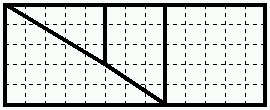
Approved by www.ari.org.

Do you want to become an Objectivist but do not have enough time and patience to read The Fountainhead and Atlas Shrugged? Now you can join the fun in just ten easy steps!
Step 1: Axioms
Step 2: Reason and Logic
Step 3: Identity
Step 4: Concept
Step 5: Context
Step 6: Man as a Rational Animal
Step 7: Egoism
Step 8: Capitalism
Step 9: Art and Æsthetics
Step 10: Objectivism in Practice
See responses to this document.
Step 1: Axioms
Axioms are the most obvious statements from which everything else
follows. The Objectivist axioms are set up in such a way that
they are irrefutable. Anyone trying to object to them must
implicitly assume them even before he or she can formulate a
counter-argument.
The first axiom is pretty much self explanatory. It will be discussed further in the section about Identity.
It may appear at a first glance that the Axiom of Subject and the Axiom of Object are the same. However, they are really like two sides of the same coin. The Axiom of Subject puts emphasis on the word I, whereas the Axiom of Object stresses the word something. Their apparent similarity reminds me of the fact that I cannot be aware without being aware of something.
Exercise:
Read out loud the Axioms of Subject and Object with proper
emphasis. For extra credit, do it in front of a mirror.
Exercise:
Give examples of the Axiom of Identity by instantiating the
variable A with pieces of furniture that you see around yourself.
Exercise:
Refute the so-called Universal Refutation of Philosophy invented
by Raymond Smullyan:
That's what you say!
Hint: derive the three Objectivist axioms from the Universal Refutation. For extra credit, derive the Axioms of Subject and Object in essentially different ways.
Step 2: Reason and Logic
I identify the method by which true knowledge is acquired.
Knowledge is awareness of reality, i.e., of what there is. I have knowledge when I am aware of something real. But since it is logically impossible for me to be aware of anything unreal, it follows that the proper way to acquire knowledge is to use logic.
Put in another way, my capacity to use logic is called reason. When I am reasoning in accordance with reality, I acquire new knowledge.
Logic is that method of thinking which is in accordance with reality.
Exercise:
Demonstrate the power of logic and thinking in accordance with
reality by proving the following elementary theorem in geometry:
In a triangle the inscribed circle touches the circle that passes through the midpoints of the sides.

Exercise:
Use reason to establish the following syllogism, first postulated by
Aristotle, the greatest philosopher of all time:
If all A are B,
and all A are C,
then some B are C.
Step 3: Identity
The Axiom of Identity can be rephrased by saying that things quite
simply are what they are. A chair is a chair, and not a table. In
philosophical language we say that a thing has identity. This
also means that a thing is identical with its properties and
characteristics. The most important consequences of this realization
are explained through the following exercises.
Exercise:
Explain in lay terms the following passage from Ayn Rand's unpublished
Secret Diary of Howard Roark:
November 18, 1998Today was her 21st birthday. We got drunk together and she tried to convince me that I didn't take our relationship seriously. I kept telling her that relationships had a secondary epistemological status, anyway, because they were generated by predicates [emphasis added]. She was shouting that I was a selfish son of a bitch. I tried to explain to her that that followed logically from A is A, but she wouldn't listen. I don't know anymore what to do. I love her, but if she does not get her identity straight soon, things could get pretty nasty between her and me.
Extra credit: Eliminate all relations from the last sentence in the above passage by replacing them with combinations of predicates.
Exercise:
Fill in the details in the following argument which swiftly dispenses
with all forms of skepticism.
Exercise:
Show that relativity theory and quantum mechanics are based on corrupt
philosophies because they violate the principle of identity. In
particular, relativity theory denies objectivity of knowledge (see
previous exercise), and quantum theory denies identity itself
(particles do not have definite properties).
We take a modern phenomenological explanation of concepts from an article [CENSORED] by [CENSORED]. This is one of the best concise explanations of Objectivist concepts--it is ironic that [CENSORED] himself is very much opposed to Objectivism.
" [CENSORED]"
A famous philosopher and admirer of Ayn Rand wrote in his Philosophical Investigations once that "we see visual sense-data through our eyes, we hear aural sense-data through our ears, and we grasp concepts through our reason."
A typical example of a concept is what you think of when you are thinking of a chair. Even though you cannot define a chair, you recognize one when you see it. An example of a more abstract concept is furniture.
Exercise:
Find the original article [CENSORED] by [CENSORED]
and read it. It was published in [CENSORED], [CENSORED]. Criticize the article
from the Objectivist point of view.
Exercise:
Refute the following argument:
Concepts are unnecessary constructs of a suspicious mental nature. It is better to avoid concepts and talk about language only.For extra credit, base your refutation on the following passage from "The Fountainhead":
She took off her nightgown, stepped to the window, sighed deeply and said: "The mind is the origin of all meaning. I mean what I say. Words in themselves are empty." He lit a cigarette and admired her naked body which was illuminated by silver moonlight.
Similarly, people grasp the same concept differently. For example, a group of people will mostly agree on what a chair is, but they will disagree in a small proportion of cases. This is because their minds grasp the concept of a chair from different contexts.
It should not be argued that every mind somehow grasps its personal copy of a concept. Instead, the differences are accounted for in the differences of contexts. Neither is it correct to say that when the context changes the concepts change with it, but rather that the same concepts are understood in a different way.
Exercise:
Find a friend and discuss with him or her the differences in your
understanding of the following concepts: set, cricket,
glass, cricket, poker, down.
First we contemplate on the nature of man. What makes a man a man (the technical expression is "man qua man")? In accordance with the method of integration and differentiation, a proper definition of man identifies man as a member of a larger category by differentiating it from other members of that category. Clearly, the larger category is animal, and the distinguishing characteristic of man is reason. Thus, we arrive at the conclusion that
Exercise:
Demonstrate that there are no rational ants. Argue as follows:
Extra credit: Does it follow that Darwin's theory of evolution is flawed, since his theory in principle allows existence of rational ants?
Exercise:
Use the ideas from the previous exercise to show that the definition
of man as rational social animal is unacceptable because
freedom is an essential characteristic of a rational
consciousness.
We quote Rand's proof of her famous theorem "Egoism as rational moral value of identity" from Formal Objectivism:
(1) |- man(x) <==> animal(x) & rational(x) [definition] (2) |- man(y) [hypothesis] (3) |- y = y [by Axiom of Identity] (4) |- rational(y) [by (1) and (2)] (5) |- knows(y, y=y) [by (3) and (4)] (6) |- rational(y) & value(y, v) ==> v [Rational Value Theorem] (7) |- egoist(x) <==> value(x, x = x) [definition of egoism] (8) |- not(egoist(y)) ==> not(value(y, y = y)) [from (7) instantiating x = y] (9) |- not(egoist(y)) ==> value(y, not(y = y)) [by not-propagation] (10)|- not(egoist(y)) ==> not(y = y) [by (9) and (6)] (11)|- not(egoist(y)) ==> false [by (10) and (3)] (12)|- egoist(y) [by (11) ad absurdum] (13)|- man(y) ==> egoist(y) [by (2) and (12) by ==> introduction]
Note: the Rational Value Theorem asserts that whatever values a rational consciousness holds, they are true, because a consciousness which holds false values is not rational.
Observe that in step (7) egoism is defined as holding ones own identity as moral value. The Ayn Rand Institute explains the Objectivist moral values as follows:
Ethics
"Reason is man's only proper judge of values and his only proper guide to action. The proper standard of ethics is: man's survival qua man--i.e., that which is required by man's nature for his survival as a rational being (not his momentary physical survival as a mindless brute). Rationality is man's basic virtue, and his three fundamental values are: reason, purpose, self-esteem. Man--every man--is an end in himself, not a means to the ends of others; he must live for his own sake, neither sacrificing himself to others nor sacrificing others to himself; he must work for his rational self-interest, with the achievement of his own happiness as the highest moral purpose of his life." Thus Objectivism rejects any form of altruism-- the claim that morality consists in living for others or for society.
Exercise:
Explain Rand's proof in ordinary language.
Exercise:
Scientists are puzzled over step (5) in Rand's proof since it never
gets used. Speculate on a reason why Rand might have included it in
her proof. Was it only her Italian heritage which spurred a
superstitious belief in the lucky number 13?
This means that the government must not limit activities of men for any reason other than to protect their freedom. This is the basic principle of capitalism.
Exercise:
Socialist ideology characterizes capitalism as the system which
institutionalizes exploitation of man by man. Show that this is
false, and that in capitalism the roles of exploiter and exploitee are
actually reversed.
Exercise:
Demonstrate superiority of Objectivist understanding of economic and
political forces by becoming rich. (Hint: take an 8x8 sheet of gold
and cut it into pieces as in Figure 2.

Then rearrange the pieces as in Figure 3.

You have now profited 1x1 square of gold. This method was suggested by epistemological research of L. Peikoff and perfected by A. Greenspan.)
Ayn Rand described her own approach to art as "Realistic Romanticism": "I am a Romantic in the sense that I present men as they ought to be. I am Realistic in the sense that I place them here and now and on this earth."
Exercise:
Surf the web and visit Essentials
of Objectivism at the Ayn Rand Institute. Read the part about
Esthetics and discuss it with your friends.
Exercise:
Andy Warhol, the notorious founder of pop art, made a portrait of Ayn
Rand, but she denounced him after she realized that he did not respect
her Objectivist principles of art and æsthetics. Criticize Andy
Warhol's painting "A Sixpack of Ayns"
from the Objectivist point of view.

"Nature, to be commanded, must be obeyed.""You can't eat your cake and have it too."
"Man is an end in himself."
"Give me liberty or give me death."
And live your life by the words of one of Ayn Rand's heroes:
"Experience without theory is blind, but theory without experience is mere intellectual play."
Exercise:
Which hero of Ayn Rand said that?
Exercise:
Ayn Rand once said:
"Tell me what a man finds sexually attractive and I will tell you his entire philosophy of life."
Apply this to your sexual preferences. What metaphysics can you deduce from sexual desires of your female or male sexual partner of the opposite sex?
Exercise:
From now on you are on your own, but if you ever need help buy
something from
the The Objectivist Store. Your final task is to follow the words of the famous
Objectivist, psychologist and radio talk-show hostess Dr. Laura Schlessinger:
